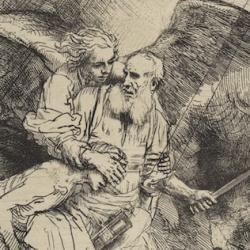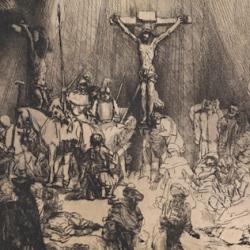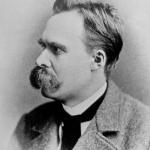Paul’s Damascus road conversion from persecutor of the church to apostle is well-known. His life story figures his hope for Israel, that the people who killed the Lord of glory would see the pierced Shepherd and repent.
Peter’s transition from persecutor to apostle is less obvious, but no less dramatic. In a brilliant treatment of Peter’s denial, René Girard points to the communal dynamics of mimesis and crowd contagion evident in the narrative. Responding to Auerbach’s reading, he writes, “Mimesis is not a separate theme but it permeates the relationship among all the characters; they all imitate each other.” In particular, “Peter’s behavior is imitative from the beginning, before a single word is uttered by anyone” (179).
Peter mimics the crowd’s desire to be near the fire, a fire that forms a communion in the circle of its warmth: “A fire in the night is more than a source of heat and of light. A fire provides a center of attraction; people arrange themselves in a circle around it and are no longer a mere crowd; they become a community. All the faces and hands are jointly turned toward the fire as in a prayer. An order appears which is a communal order. . . . The fire turns a chance encounter into a quasi-ritualistic affair” (180).
Peter “violates the communal feeling of this group.” He doesn’t fit. He has a Galilean accent, and he is recognized as one of Jesus’s followers. Peter, though, is so desirous to fit into this crowd, so eager to have his place at the communal fire, that he denies Jesus. When Jesus was arrested, he believed that the community of disciples was finished. Rather than be an outsider, he joins himself to a different community, the community of those allied with the high priest who is inside putting Jesus on trial (180-1).
What Girard’s analysis highlights is the fact that Peter, for a few moments at least, gets exactly what he wishes for. He wants to be part of the community of the fire, and he becomes part of that community. He doesn’t simply step outside the community of disciples. That community is shattered (and will have to be regathered); he joins the opposing community, those who deny Jesus. He joins the persecutors.
In John’s gospel, Peter is restored to Jesus’s fellowship at another communal fire, the breakfast fire at the shore of Tiberius. He has already left the communion of persecutors, but he rejoins the communion of Jesus only after the resurrection vindicates Jesus as the innocent scapegoat. At the charcoal fire, Peter confesses Jesus and is inducted into a positive mimesis: “Feed My sheep,” says the Good Shepherd. Be ready to lay down your life for them, as I have.
Peter’s denial and restoration, like Paul’s life of persecutor-to-apostle, traces the shape of early Christian hope for Israel, that those who deny and persecute the Christ are not cast off.
(These thoughts were inspired by a recent colloquium on René Girard and the Bible. The quotations are from Girard, “Peter’s Denial and the Question of Mimesis,” Notre Dame English Journal 14:3 [1982] 177-89.)















